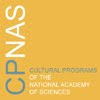to comment on this post, click on "comments" below
to return to main page go to www.visualcultureandbioscience.org
From: Brad Smith
Date: Tue, 6 Mar 2007 01:16:14 -0500
Greetings to fellow panelists and visitors,
I would like to embed answers to all three of the following questions into one response without distinct boundaries for these issues.
Questions posed by Suzanne Anker:
1) What role do picturing practices play in your discipline of “knowledge production?”
2) How have your perceptions and attitudes of mind been challenged by current dialogues within the “Art-Sci” arenas?
3) What role have new imaging technologies played in your conceptualizations of visual modeling or artistic application?
My Background:
I move back and forth between creative visual work and science, as an artist, as a researcher in radiology, as a faculty member in Art & Design, and as a medical illustrator. Recently, it has not been clear to me which role I am playing at any particular moment.
My Response to the Questions:
The following are email comments to a website showing MRI depictions of embryos. The genesis of the website is explained later in this response:
“I am now having second thoughts about having an abortion but I know that I would not be able to give my child a good life.”
“I would like to know if an embryo is also regarded as living human?”
“…at what stage does it get the human soul?”
” I was wondering how I could find out about selling my embryos in the state of Georgia”
“…He said that I should get an abortion because it is just an embryo right now. Could you tell me exactly what an embryo is.”
“I just had a frozen Embryo Transfer done on Tuesday and we were wondering what our chances of conceiving are.”
I used magnetic resonance microscopy in the 1990’s to detect and document cardiovascular development in mammalian embryos. This was a time when molecular and developmental biologists were beginning to manipulate many genes thought to be important to development of the embryo. However, these same researchers were not trained or equipped to recognize and interpret the results of their genetic manipulations. They often were not able to distinguish a normal from abnormal embryo looking at it directly or observing it under a microscope. It was in this environment that I developed MRI methods to record the normal and abnormal development of genetically manipulated embryos with the aim of understanding if the gene in question was essential to normal development. This imaging technology was used to look for very specific morphological evidence of changes from normal development. Optical histology had been used historically, but the single slice images of histology were not adequate to understand complex three-dimensional structures that were changing during development.
MRI of the embryos allowed me to produce virtual 3D (and 4D with time as the fourth dimension) depictions of developmental processes. I began to use animations of rotations, fly-throughs, and dissolves of the embryos to depict the results of my colleagues’ genetic manipulations. Thus, imaging was used to investigate, to document, and to communicate. It certainly had other social consequences as described above and below. Interestingly, this imaging process also posed new biological questions that would not have been considered otherwise, and thus the imaging led to new questions and new experiments. The imaging became part of an iterative process, similar to the iterative process I experience in my creative work where viewing a creative artifact will suggest unanticipated questions and seek new interpretations.
It is also curious that imaging mouse embryos exerted a social or political influence sufficient to dislodge a considerable amount of money from a large bureaucracy. The National Institutes of Child Health and Human Development requested the production of an MRI atlas of human embryos because of the images they had seen of mouse embryos.
http://embryo.soad.umich.edu/
While the aim of the human embryo imaging project was to document human embryos for educational, research, and clinical use, the more interesting consequence was a flood of email from the public with very private and poignant questions about human reproduction, development, and the meaning of being human. The quotations at the top of this message are responses to seeing MRI depictions of embryos resulting from this funded research. They suggest an emotional influence of imagery that was intended to be clinical.
I have subsequently revisited these image data as an “artist”, addressing ways that images can ascribe social, political, and moral status to embryos.
http://www-personal.umich.edu/~brdsmith/Statement_Totems.html
Of particular interest to me is the manner in which visually depicting an embryo politicizes it and makes it “known”. How is the embryo’s meaning (and status) variously conferred or implied by direct sight, drawings, ultrasounds, paintings, photographs, sculptures, virtual models, in-utero video, or MRI’s? The embryo is considered in our culture as property, family member, medical cure, bearer of legal rights, experimental material, a potential, and an actualized individual. These new depictions leverage the technology of MRI to inscribe views of human embryos that conflate the ideas of familial relationships, history, genetic manipulations, and human identity.
Brad
Brad Smith, Ph.D.
Associate Dean for Creative Work, Research and Graduate Education, School of Art and Design
Associate Professor, School of Art and Design
Research Associate Professor, Radiology
University of Michigan
to comment on this post, click on "comments" below
to return to main page go to www.visualcultureandbioscience.org
Subscribe to:
Post Comments (Atom)

No comments:
Post a Comment